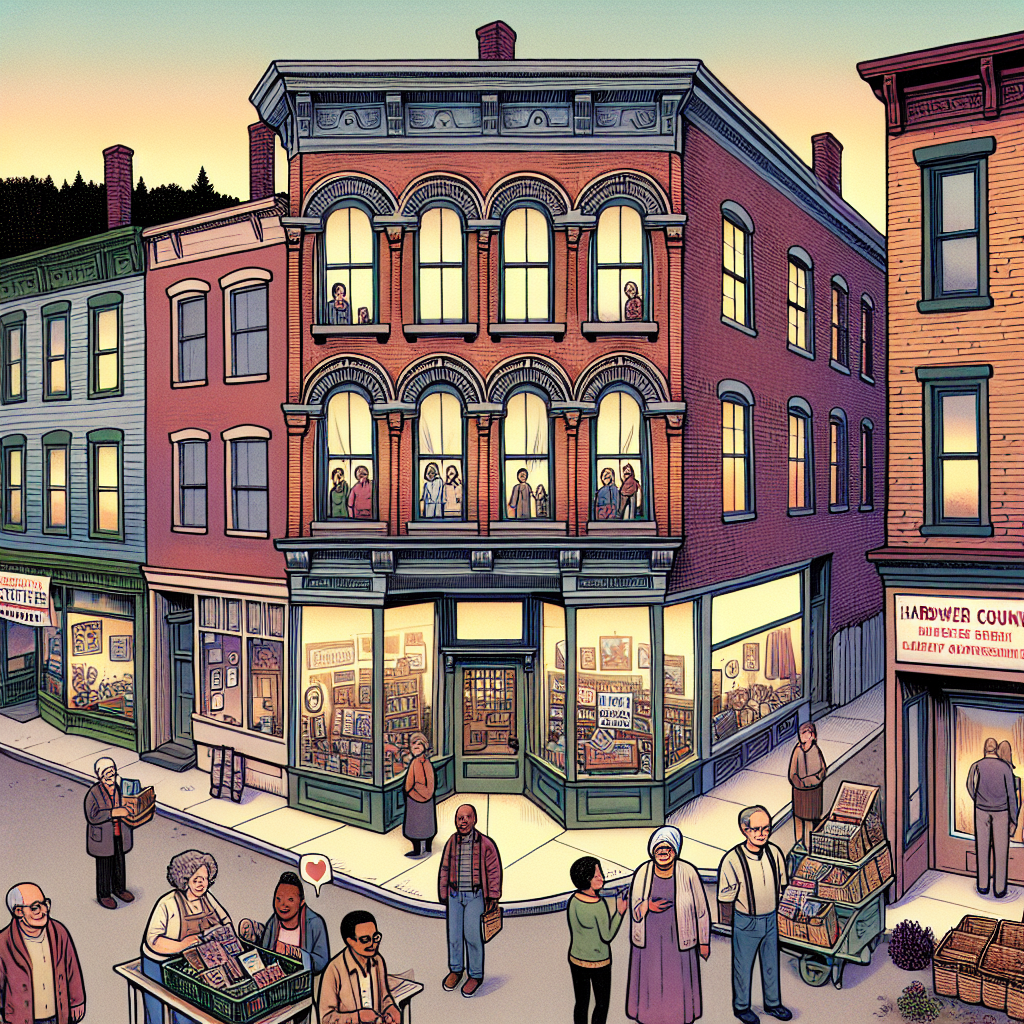“Chesterburgh Council Rejects Revamp of Historic Merrick Building Amid Financial and Community Concerns”

Chesterburgh’s Main Street saw its latest twist last Tuesday evening when the town council threw a unanimous “no” on a proposal to repurpose the old Merrick Building into a community arts space. The developer, who had promised new life for the long-empty structure, left town hall with plans shelved and fingers crossed elsewhere.
The Merrick Building stands at 47 Main, a brick-eyed relic that has watched decades slip by quietly—or at least in the odd creak and groan of its wood floors. It’s been empty since the last tenant, a decades-old print shop, shuttered its doors in 2016. Until recently, the building had hovered on the edge of town’s collective forgetfulness.
“It’s a beautiful old place with history,” said Clara Hensley, a librarian and local historian. “But it also needs care, not just good intentions.” Hensley later added, “We don’t want to lose those walls to neglect or a bad remodel.”
The developer, Nathaniel Cosgrove, pitched the plan as a “community-driven arts incubator,” mixing studio spaces with gallery areas and a small café. The idea was to attract local artists and visitors, stoking a little cultural revival. His presentation included renderings—clean lines and big glass windows—clearly an attempt to marry historic charm with modern flair.
Council members, however, asked tough questions about funding, maintenance, and the building’s structural integrity. Cosgrove admitted he was still courting grants and investors. “This isn’t a short-term flip,” he explained during the meeting. “It’s a long haul—something sustainable.”
That notion seemed to falter in the cold light of fiscal reality. Several council members referenced a recent town engineering report flagging issues with the foundation and electrical systems. Repair estimates ran north of $450,000. The town, strapped for cash and wary of ongoing subsidies, was not eager to add another financial headache.
“This town has a history of projects starting with a bang and fading into half-finished dreams,” said Councilwoman Margo Tiller. “We owe it to Chesterburgh to be sure this isn’t another one.”
Councilman Jeffrey Banks pointed to competing priorities: road repairs, school upgrades, and public safety initiatives. “We have limited resources and many urgent needs. Betting on a risky development doesn’t serve the majority,” he argued.
One wrinkle in the evening’s debate was confirmation that the structure lies in a zone recently reclassified from commercial to mixed-use, allowing residential elements on upper floors. Cosgrove had hinted at possibly adding artist lofts above the studios, seen as a way to ensure year-round income.
That option, while popular among some residents, complicated the matter. Opponents worried about increased density on Main Street, parking shortages, and the erosion of the town’s deeply held character.
“I moved here for the peace and the charm,” said Susan Meyer, a third-generation Chesterburgh resident. “If we slap on apartments without thinking, we lose that.”
The council’s decision to reject the proposal was met with mixed reactions. A small group of artists and younger residents expressed disappointment, saying the town needs to embrace change to thrive. Local businessman Tom Greer, owner of Greer’s Hardware, was more reserved. “We need vitality, sure, but not at the cost of becoming something we’re not. Smart growth, not fast growth.”
Cosgrove told me afterward that he wasn’t giving up. “I believe in this community and its potential,” he said. “We’ll explore other options, maybe smaller-scale projects or partnerships.”
Meanwhile, the Merrick Building stands quiet again, its windows reflecting the fading light. What’s next for this building is up in the air, but one thing is clear: Chesterburgh will watch, wait, and weigh every move—as it always has.
After all, every empty building tells a story waiting to be figured
